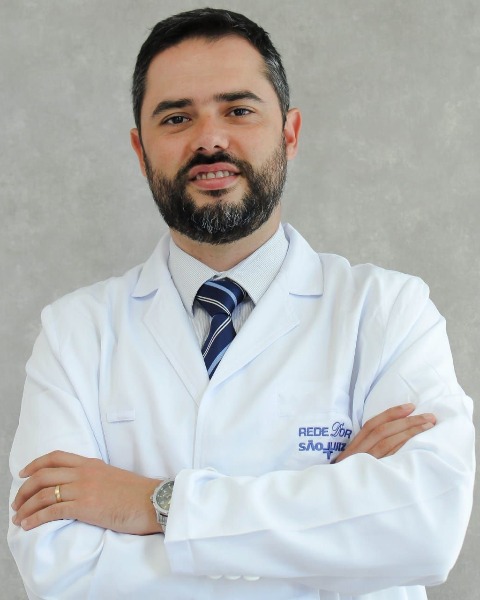Back
Poster, Podium & Video Sessions
Moderated Poster
MP34: Infertility: Therapy
MP34-12: Open Testicular Mapping Technique for Sperm Retrieval in Men with Non-Obstructive Azoospermia
Saturday, May 14, 2022
4:30 PM – 5:45 PM
Location: Room 225
Leonardo Lopes*, Rodrigo Silva, Santo Andre, Brazil, Joaquim Lorenzetti, Parana, Brazil, Winter Figueiredo, Thais Feitosa, Rafaella Medugno, Ivan Yoshida, Caio Barbosa, Roberto Juliano, Sidney Glina, Santo Andre, Brazil

Leonardo Seligra Lopes, MD, MSC
Centro Universitario FMABC Urology Division
Poster Presenter(s)
Introduction: Infertility affects approximately 15% of couples overall, being any male factor present in up to 50% of couples. Non-obstructive azoospermia (NOA) is the most severe form of male factor-related infertility and is characterized by minimal or no sperm production in the seminiferous tubules. Several methods have been described to retrieve testicular sperm in patients with NOA, being testicular microdissection (micro-TESE) presented as the best option in recommendations from international societies, however with high costs and the need for microsurgical training. The aim of this study is to present the previously described open mapping technique (OTEM) and its results in relation to assisted reproduction.
Methods: Retrospective analysis of medical records from patients with NOA undergoing sperm retrieval through OTEM technique at the Ideia Fértil Institute of Reproductive Medicine, located in Santo André, São Paulo, Brazil, from 2016 to 2019. Data were analyzed in relation to the recovery of viable sperm for in vitro fertilization (IVF) and possible associations. ICSI fertilization rate, pregnancy, abortion and live births outcomes were evaluated. Statistical analysis was performed using absolute and relative frequencies using Stata (StatCorp, LC) version 11.0. program.
Results: 118 NOA patients were submitted to the OTEM technique; (43.22% unilateral and 56.78% bilateral). The sperm retrieval rate was 55.83%. When concurrent testicular biopsy was performed, a higher prevalence of hypospermatogenesis histopathology was found, with sperm retrieval also achieved in cases of “Sertoli Only Cell” histopathology. High FSH values were associated with a lower sperm recovery rate. In couples undergoing IVF cycles (n=67) a fertilization rate of 62.11%, a clinical pregnancy rate of 46.27%, an abortion rate of 6.56% and a live birth rate of 44.26% were found.
Conclusions: Using a less invasive, cheaper, and more accessible technique, we achieved a similar sperm retrieval, pregnancy and live births rates to those found in micro-TESE, which is now considered the gold standard. Therefore, OTEM can be used as a cost-effective alternative
Source of Funding: None.
Methods: Retrospective analysis of medical records from patients with NOA undergoing sperm retrieval through OTEM technique at the Ideia Fértil Institute of Reproductive Medicine, located in Santo André, São Paulo, Brazil, from 2016 to 2019. Data were analyzed in relation to the recovery of viable sperm for in vitro fertilization (IVF) and possible associations. ICSI fertilization rate, pregnancy, abortion and live births outcomes were evaluated. Statistical analysis was performed using absolute and relative frequencies using Stata (StatCorp, LC) version 11.0. program.
Results: 118 NOA patients were submitted to the OTEM technique; (43.22% unilateral and 56.78% bilateral). The sperm retrieval rate was 55.83%. When concurrent testicular biopsy was performed, a higher prevalence of hypospermatogenesis histopathology was found, with sperm retrieval also achieved in cases of “Sertoli Only Cell” histopathology. High FSH values were associated with a lower sperm recovery rate. In couples undergoing IVF cycles (n=67) a fertilization rate of 62.11%, a clinical pregnancy rate of 46.27%, an abortion rate of 6.56% and a live birth rate of 44.26% were found.
Conclusions: Using a less invasive, cheaper, and more accessible technique, we achieved a similar sperm retrieval, pregnancy and live births rates to those found in micro-TESE, which is now considered the gold standard. Therefore, OTEM can be used as a cost-effective alternative
Source of Funding: None.

.jpg)
.jpg)